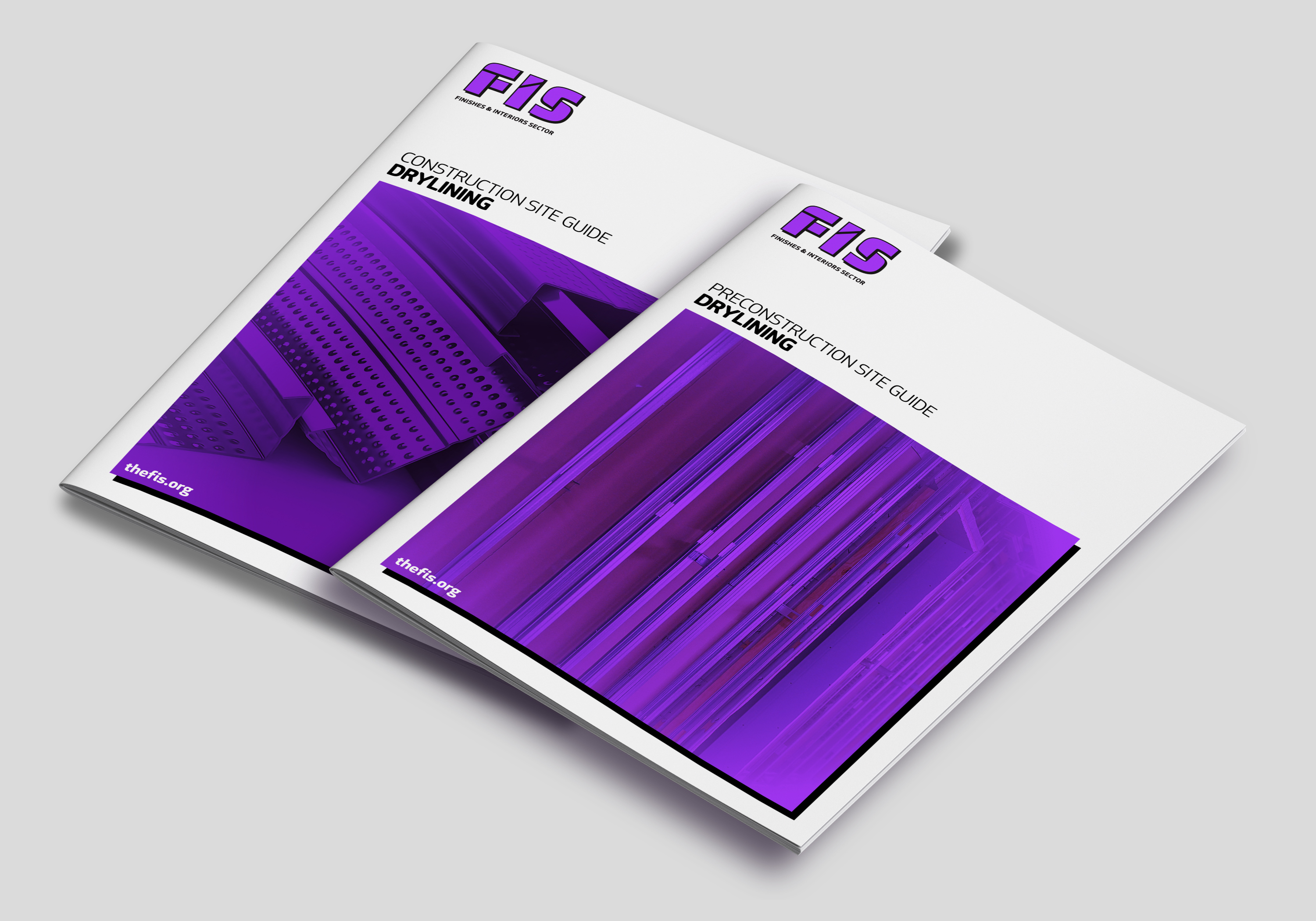Specifier's Guide to Drylining
Contents |
[edit] Who is the Specifiers’ Guide to Drylining for ?
Specifiers’ Guide – Drylining was published by the Finishes and Interiors Sector (FIS) in 2022.
The guide was written and produced by the FIS Drylining Working Group which comprises representation from manufacturers, designers and contractors working in the drylining sector.
The guide will help specification writers fully understand the criteria when writing a specification for drylining, including partitions, wall linings and shaft wall systems. Pulling together decades of experience, it is designed to help specifiers and designers understand the questions that should be addressed before the specification can be produced and then how the specification should be structured, and which standards referenced. The guide includes top tips when specifying drylining, as well as reference material to regulations for safety, fire performance and standards.
[edit] Comments on the publication
Iain McIlwee, FIS Chief Executive said: “Specifying drylining seems, on the face of it, simple enough: consider the look, performance and cost, and there it is. If only it were that simple there would not be cases where evidence of fire compartmentation could fail or fail to perform because the issue wasn’t apparent during the specification process.”
“A well written specification not only ensures the installation meets the client’s requirements, but it also means the specifier’s requirements are less open to interpretation, which is key for the whole supply chain if they are going to deliver the quality and detail first time, on time,” added Iain McIlwee.
[edit] Guide contents
The contents of the guide are:
- Foreword
- Introduction
- Scope
- RIBA plan of work
- The Specificaton
- Design Considerations
- Performance
- Design for security
- Other Material Characteristics
- Materials
- Drylining Systems
- Finishing
- Doors
- Project Planning
- Competence
- Checklist
- Appendix
- Glossary
The guide sits alongside other FIS best practice guides that relate to drylining including:
These guides work well when they are included in proposals and project plans to demonstrate how to best approach a project. The Specifiers’ Guide – Drylining is available for download here
For further information or for any questions please contact FIS at [email protected] or contact construction marketing communications agency Fabrick
--FIS
[edit] Related articles on Designing Buildings
Featured articles and news
Delivering for tenants; National Retrofit Hub
New report offers recommendations to strengthen energy efficiency standards to protect private renters.
Government consultations for the summer of 2025
A year of Labour, past and present consultations on the environment, the built environment, training and tax.
CMA competitiveness probe of major housing developers
100 million affordable housing contributions committed with further consultation published.
Homes England supports Greencore Homes
42 new build affordable sustainable homes in Oxfordshire.
Zero carbon social housing: unlocking brownfield potential
Seven ZEDpod strategies for brownfield housing success.
CIOB report; a blueprint for SDGs and the built environment
Pairing the Sustainable Development Goals with projects.
Types, tests, standards and fires relating to external cladding
Brief descriptions with an extensive list of fires for review.
Latest Build UK Building Safety Regime explainer published
Key elements in one short, now updated document.
UKGBC launch the UK Climate Resilience Roadmap
First guidance of its kind on direct climate impacts for the built environment and how it can adapt.
CLC Health, Safety and Wellbeing Strategy 2025
Launched by the Minister for Industry to look at fatalities on site, improving mental health and other issues.
One of the most impressive Victorian architects. Book review.
Common Assessment Standard now with building safety
New CAS update now includes mandatory building safety questions.
RTPI leader to become new CIOB Chief Executive Officer
Dr Victoria Hills MRTPI, FICE to take over after Caroline Gumble’s departure.
Social and affordable housing, a long term plan for delivery
The “Delivering a Decade of Renewal for Social and Affordable Housing” strategy sets out future path.
A change to adoptive architecture
Effects of global weather warming on architectural detailing, material choice and human interaction.
The proposed publicly owned and backed subsidiary of Homes England, to facilitate new homes.
How big is the problem and what can we do to mitigate the effects?
Overheating guidance and tools for building designers
A number of cool guides to help with the heat.
The UK's Modern Industrial Strategy: A 10 year plan
Previous consultation criticism, current key elements and general support with some persisting reservations.
Building Safety Regulator reforms
New roles, new staff and a new fast track service pave the way for a single construction regulator.




























Comments
[edit] To make a comment about this article, click 'Add a comment' above. Separate your comments from any existing comments by inserting a horizontal line.